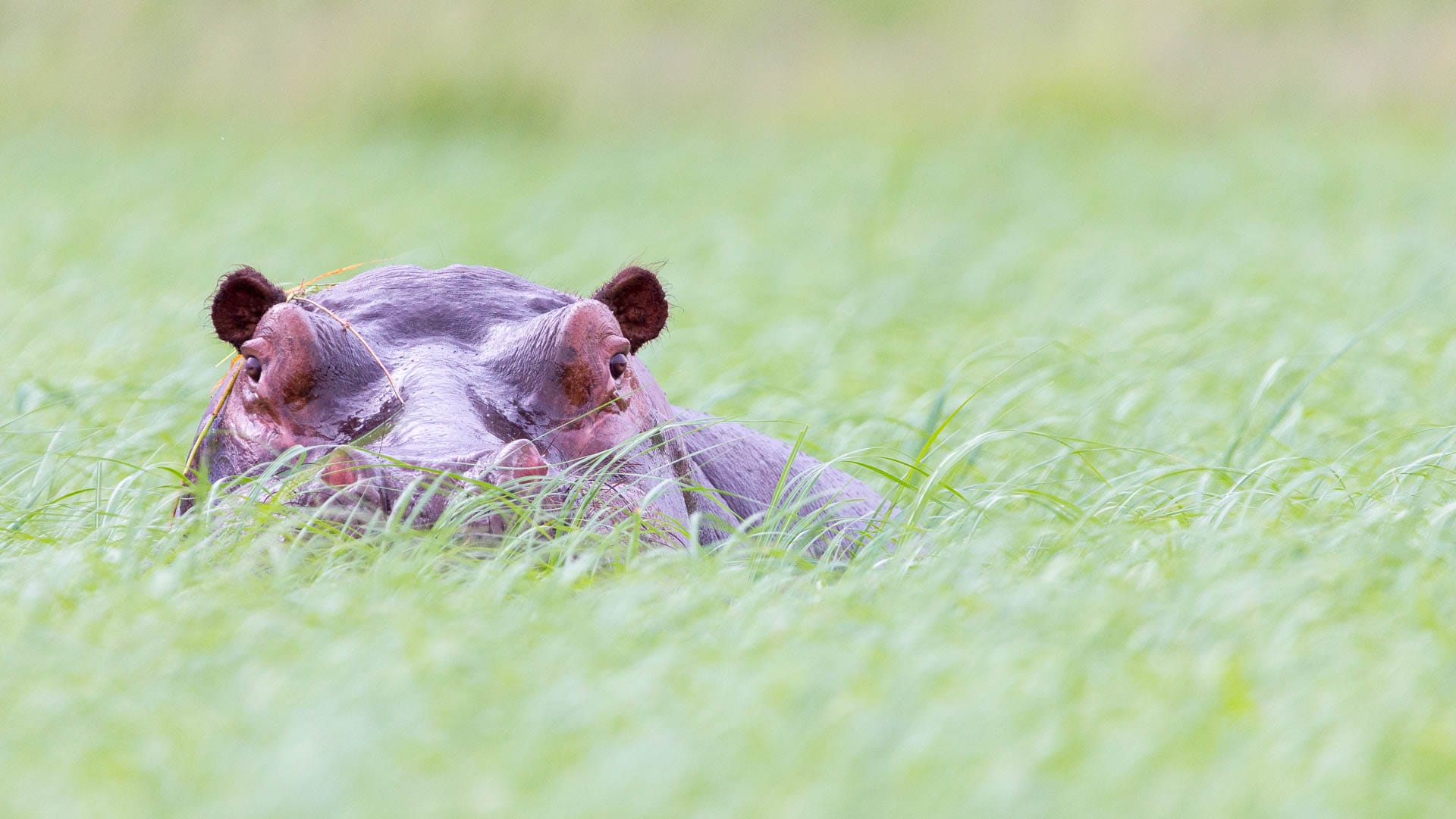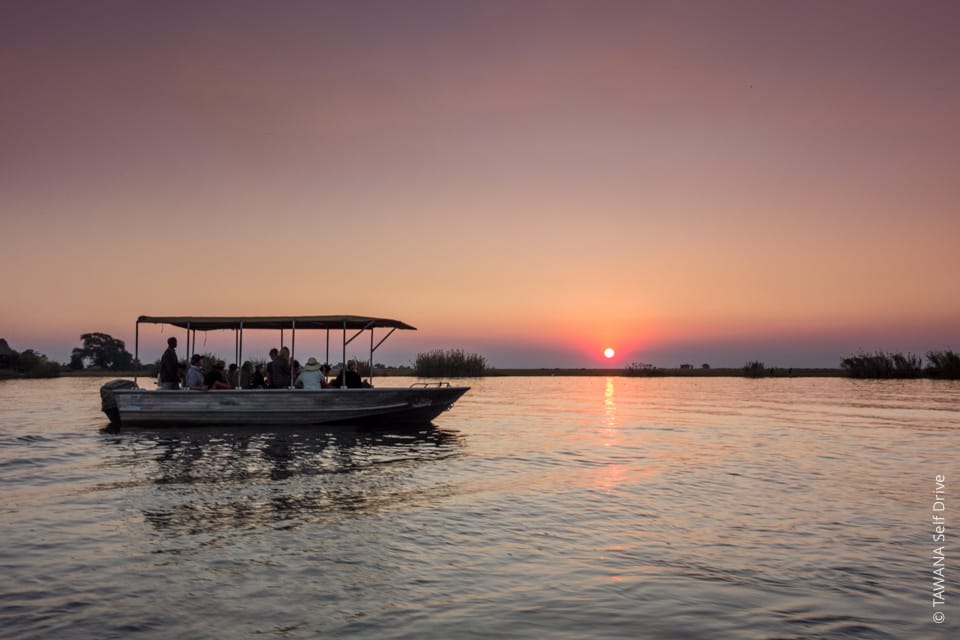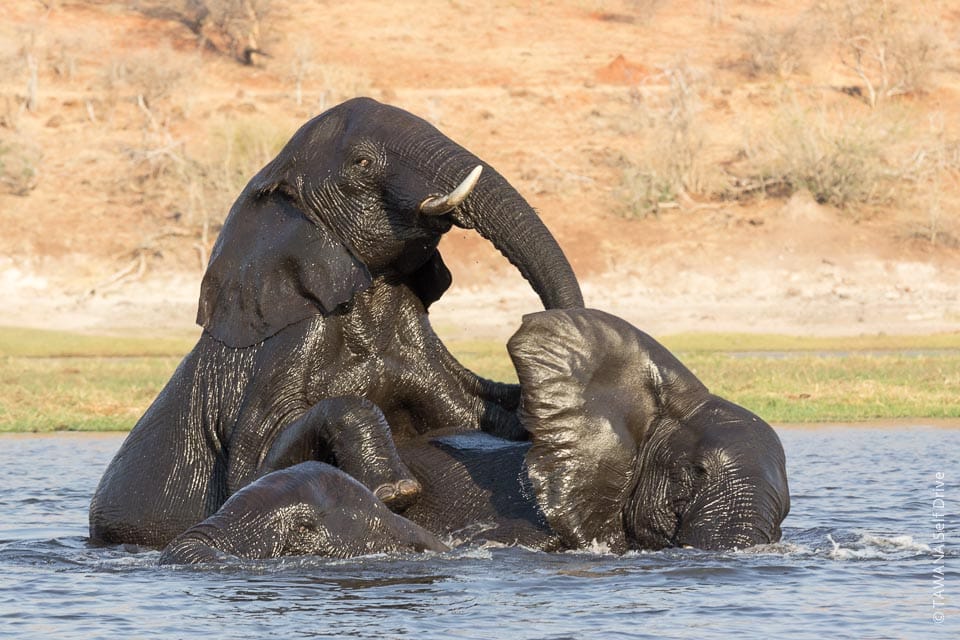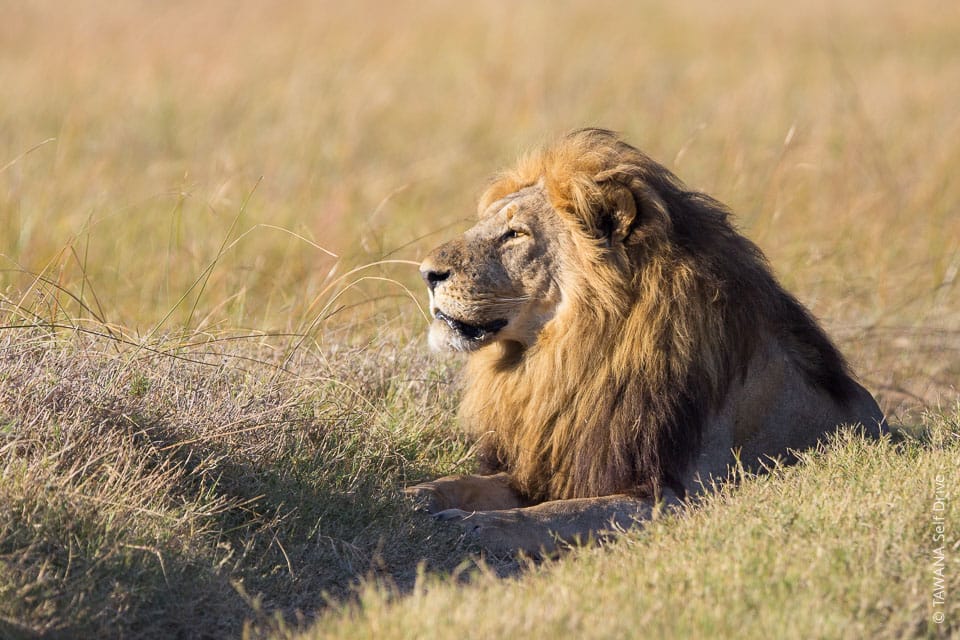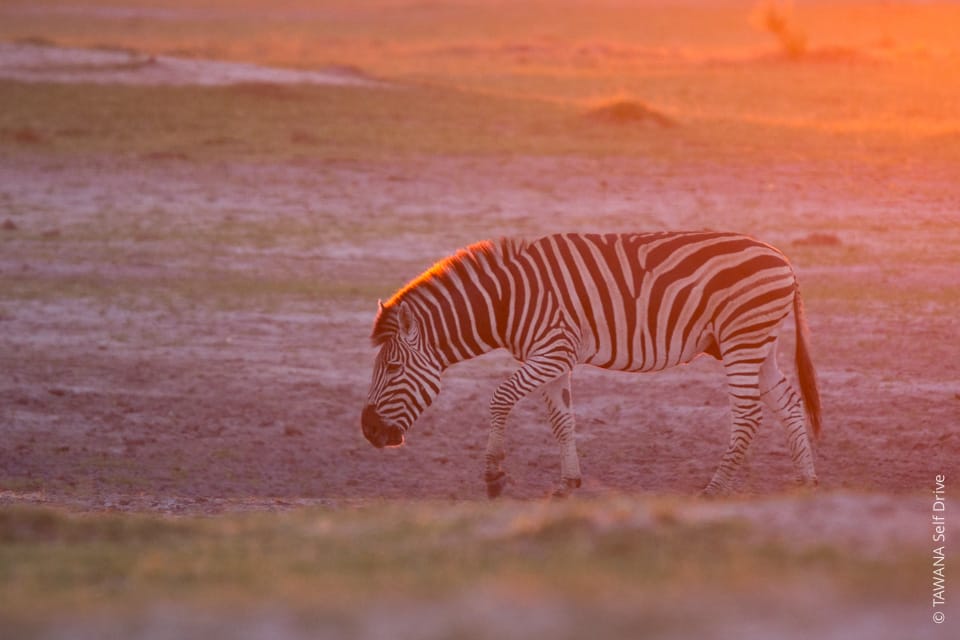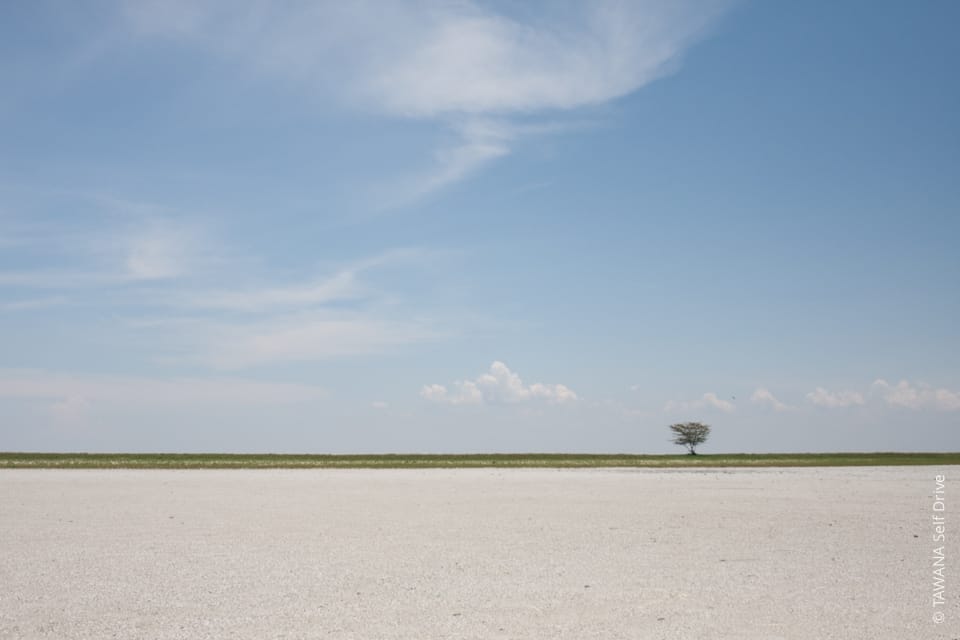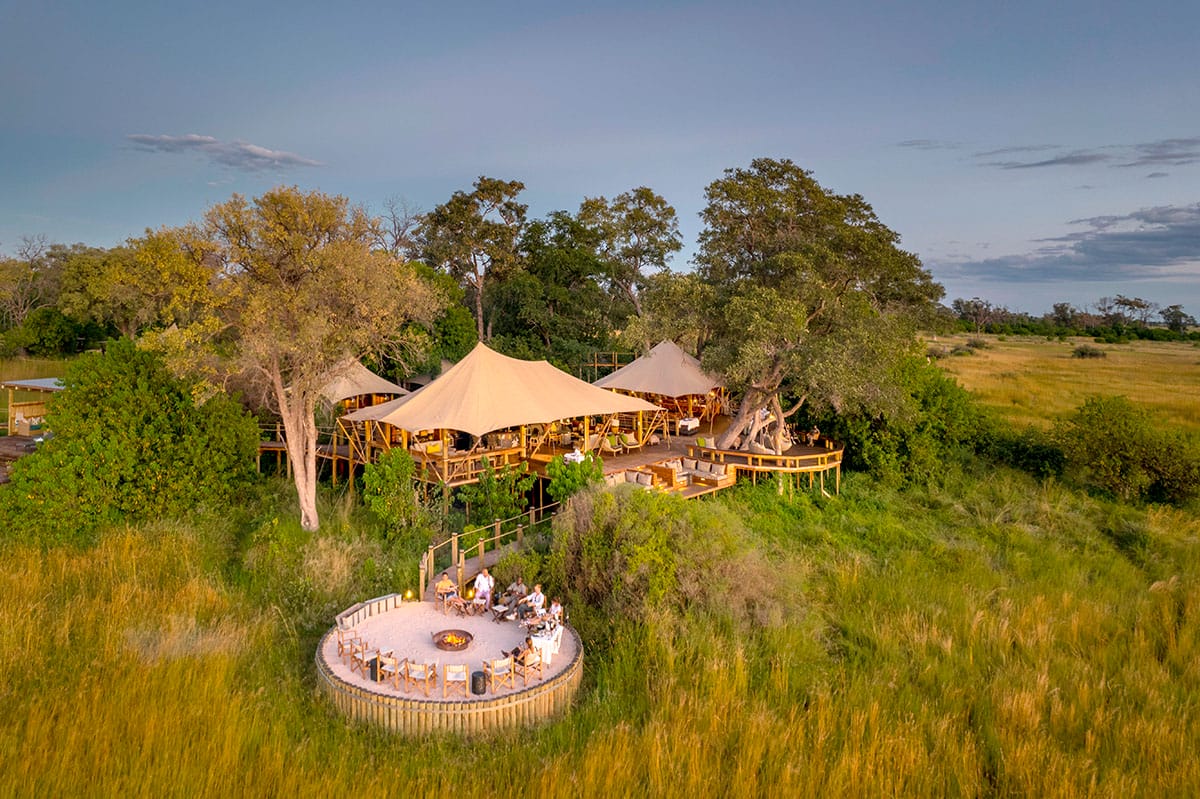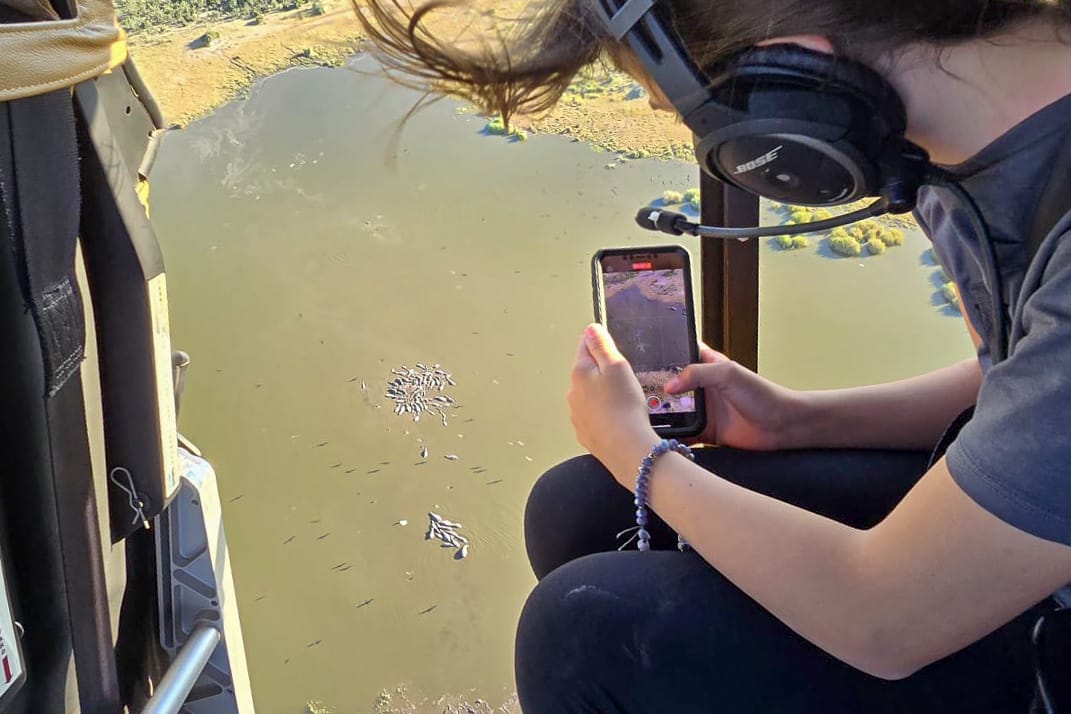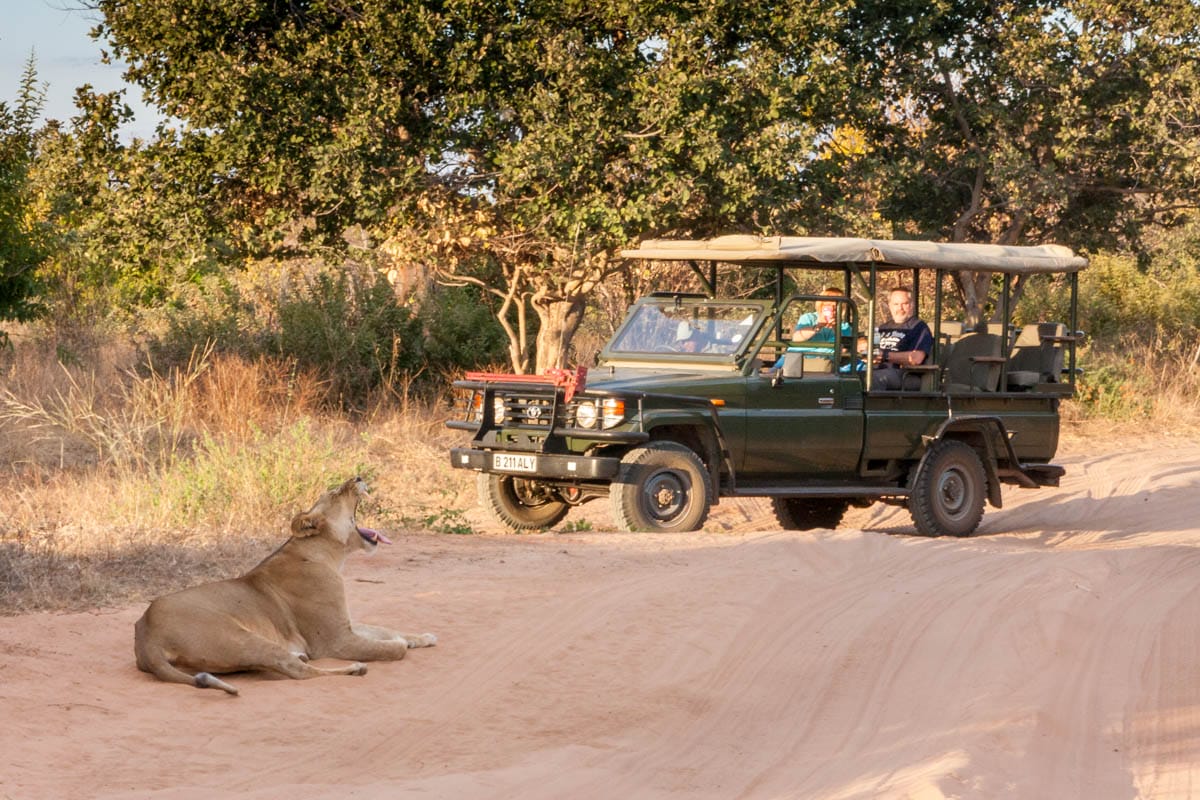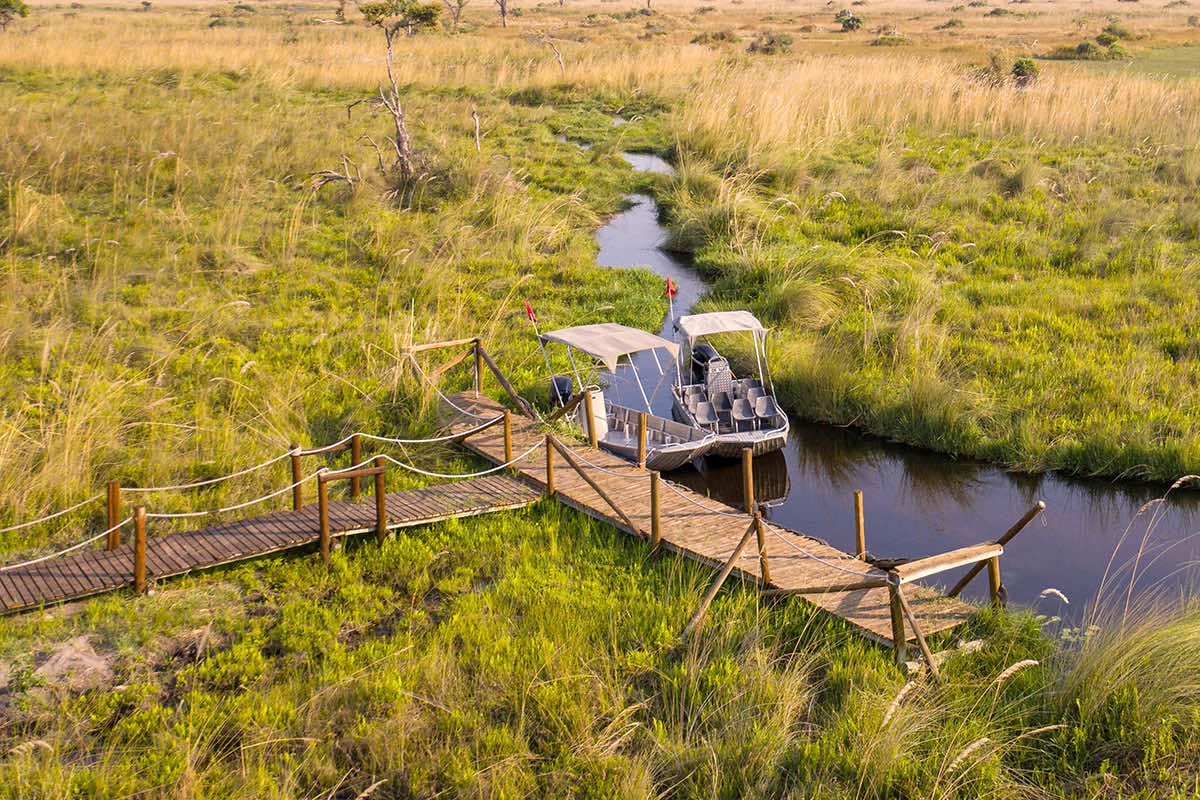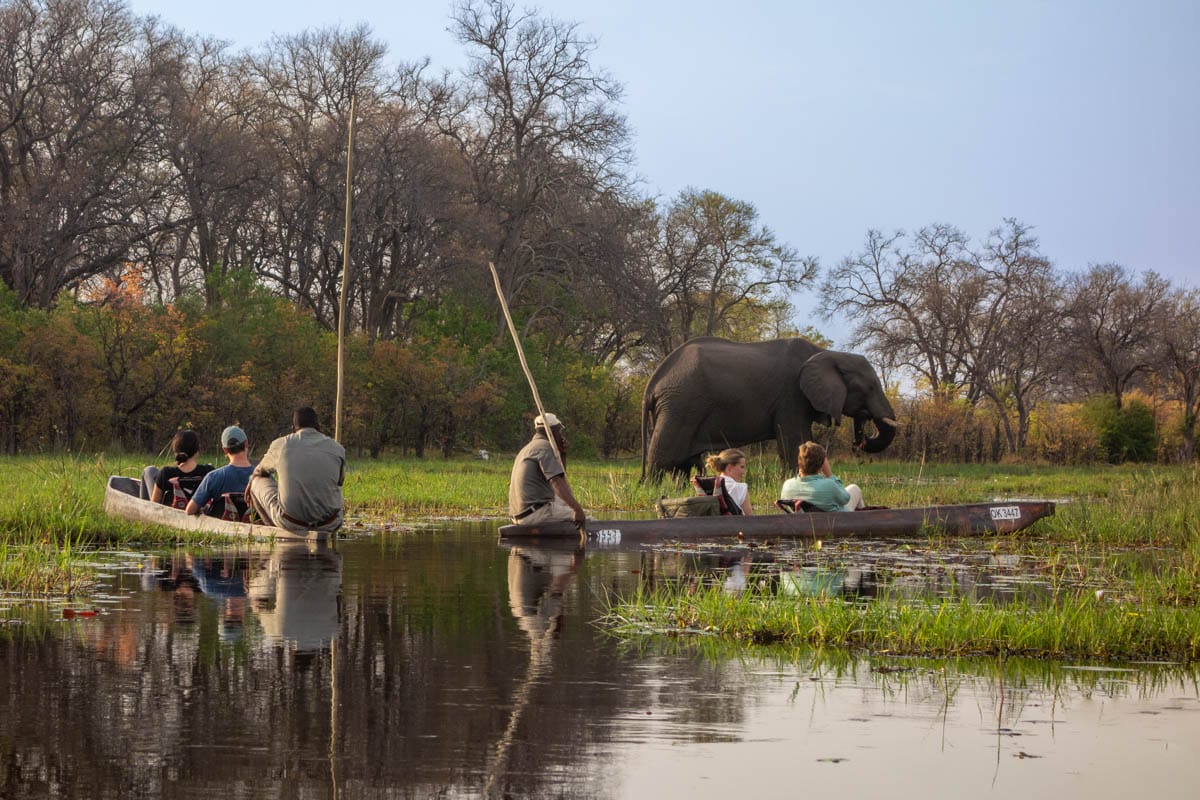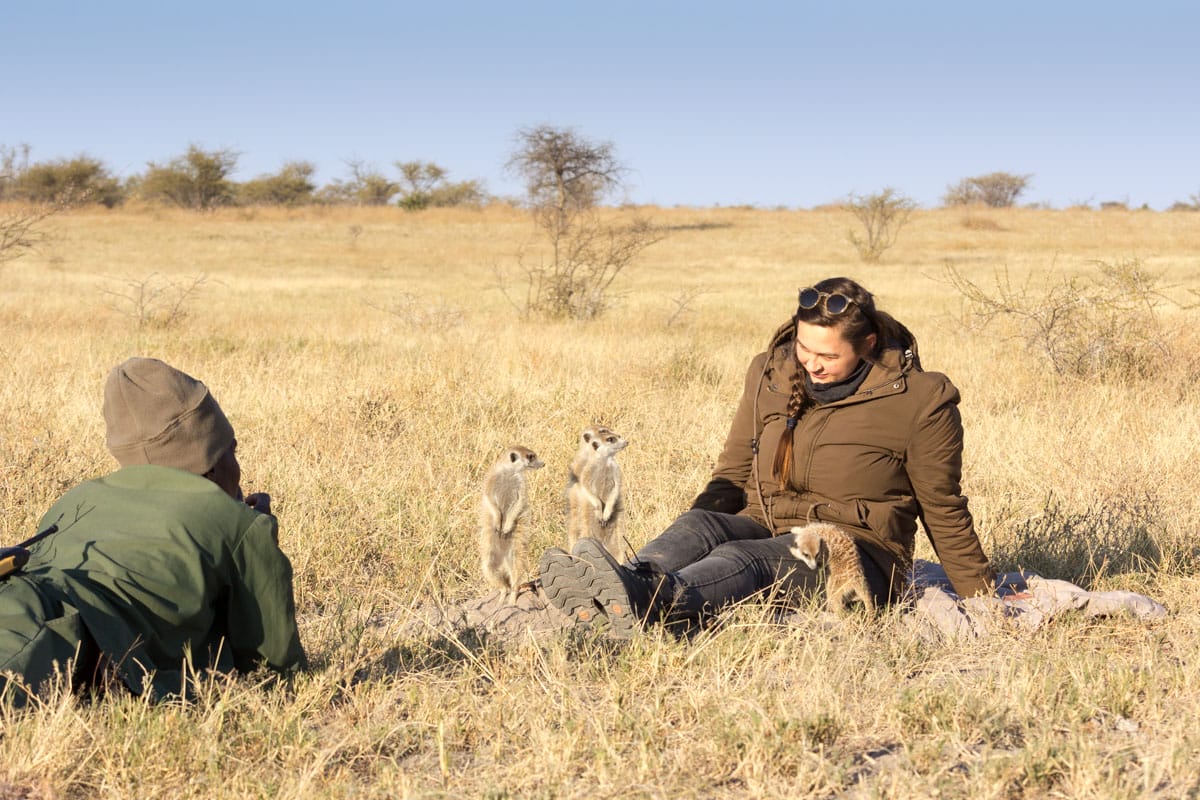The Water Route : the ultimate self-drive adventure in Botswana
80% covered by desert, Botswana benefits from a near-miraculous and fragile system of irrigation. From its source in Angola, the Kwando river irrigates the north-east of the country, swelling the Linyanti and Chobe rivers before joining the waters of the Zambeze, which together attract an incredibly diverse range of wildlife.
To the west, the Kavango river disappears amidst the arid terrain of the Kalahari. It constitutes the second largest inland delta in the world and drains a network of rivers and canals towards the south, along which a rich array of wildlife can be found.
Following the Water Route will be the self-drive adventure of a life time, leading into the heart of the wild and authentic natural beauty of the north of Botswana from the Chobe river, along the Savuti chanel and the lagoons of the Okavango Delta, then up to the Boteti river.
Maun
Réserve de Moremi
Concession de Khwai
Parc national de Chobe : Savuti
Parc national de Chobe : River Front
Kasane
Victoria Falls
Vallée de Lesoma
Nata
Gweta
Parc national de Nxai Pan
Boteti River
SUMMARY
Destination: Botswana, Zimbabwe
Duration: 14 to 21 days
Starting point: Maun or Kasane
Accommodation: Camping and/or Lodge
Chobe River, Botswana
STEP BY STEP
Your self-drive safari in Botswana can start in Kasane or in Maun.
KASANE
The small town of Kasane enjoys an exceptional location at the crossroads of Botswana, Namibia, Zambia and Zimbabwe, and at the gateway to Chobe National Park, one of the most attractive in southern Africa.
An ideal starting point for the Water Trail, the town has an international airport with regular flights from Johannesburg in South Africa. It has a number of supermarkets, cash dispensers, petrol stations and garages, so you can stock up on everything you need before hitting the road.
Kasane is also a charming town where you can relax for a few days before hitting the road. This is a good time to take advantage of its many activities, such as the unmissable cruise on the Chobe River, which will be a fantastic first contact with Botswana’s wildlife.
GOOD TO KNOW
Accommodation: All types of accommodation are available in Kasane, from basic hotel to upmarket lodge, self-catering chalet, bush camp or campsite.
Supplying: Kasane and Kazungula have several supermarkets, ATM and bureaux de change, and numerous fuel stations.
Roads: Kasane is easy to get around, but sandy tracks replace the tarmac as soon as you enter the Chobe National Park or the Lesoma Valley.
Chobe National Park is one of Africa’s most popular game parks. Its wildlife is particularly abundant and its 4 major ecosystems contain an exceptional variety of animals:
- The River Front, located on the banks of the Chobe River, is characterised by abundant vegetation that attracts large herds during the dry season. Gatherings of elephants and buffalo are spectacular. The region is also home to a very fine population of lions and leopards. 4 of the Big Five, Africa’s most sought-after animals, can be seen here.
- Savuti, to the south-west of the park, is made up of hills, pans and a large swamp where zebras migrate every year. The whole region is particularly good for spotting cats: lions, leopards and cheetahs.
- Linyanti, in the north-west, consists of a swamp bordered by forest. This wooded habitat is popular with many mammals, including the rare lechwe cob and sitatunga. More confidential, Linyanti has a unique charm despite the presence of dotted wildlife, a limited network of tracks and fairly technical access over deep sand.
- Nogatsaa, in the south-east, is mainly made up of forests and large expanses of land. Wildlife is harder to spot in this remote region. What’s more, the tracks are very demanding in both the wet and dry seasons.
CHOBE RIVER FRONT
Whether by boat or 4×4, exploring the banks of the Chobe is always an exciting experience. From the river, watching the hippos, crocodiles, elephants and all kinds of antelopes that inhabit the islands is one of the best in the country, not to mention the spectacular birdlife.
From the land, the immersion in the animal kingdom is remarkable. It’s not unusual to find yourself surrounded by elephants, to observe a hunting scene or to spot a leopard on the branch of an acacia tree. At the River Front, the encounters and sunsets are always unforgettable, and this stage is always one of the most popular on a 4×4 safari in Botswana.
GOOD TO KNOW
Accommodation: the River Front region is accessible from Kasane in the east or Muchenje in the west, where there are campsites, self-catering chalets, bush camps and lodges. Only one lodge and the Ihaha campsite are located inside the park.
Supplying: Kasane and the Muchenje service station to the west of the park.
Roads: Up to Serondela, the tracks consist mainly of sand, which can be quite deep in places. After Serondela, the surface is harder but also more rugged.
CHOBE SAVUTI
The Savuti region is particularly well known for its lion population, but also for the astonishing story of its canal, which dried up for almost 30 years before flowing abundantly again. What appeared to be a real mystery was recently explained by geological movements that blocked the canal in the 1980s before releasing it in 2010.
Today, the Savuti Canal is once again dry, but a surprising abundance of wildlife still occupies the famous hills and pretty stretches of the region. Prides of lions remain impressive and cheetahs, absent from the River Front, are regularly spotted on the wide plains that have replaced the swamp.
GOOD TO KNOW
- Accommodation: The Savuti campsite is the only one in the region. 4 luxury lodges also operate here: Ghoha Hills, Savuti Safari Lodge, Savuti Elephant Camp, Camp Savuti, and mobile safaris have their own private sites
- Supplying: Unavailable
- Roads: Alternating sand and dirt tracks. In the dry season, the sand can become very deep and difficult to ride on. In the rainy season, the sand is no longer a problem, but as soon as the first rain arrives, the mud start being challenging on the Savuti Marsh, which quickly become impassable.
Moremi’s ecosystem, which has remained very authentic, is one of the richest and most varied on the African continent. Birds abound and most of Africa’s mammals can be seen. The reserve is a paradise for self-drivers, as much for its wild character as for the demanding driving it requires.
KHWAI CONCESSION
The Khwai floodplains offer magnificent panoramic views and excellent wildlife-watching opportunities. Birds of prey are common along the river, as are many birds. Lions regularly hunt the buffalo that congregate around the river and there is excellent viewing of other predators, especially leopards and hyenas. Elephants congregate around the permanent waterholes, as do the hippos, whose laughter will probably punctuate your nights!
XAKANAXA LAGOON
Situated in one of the most beautiful regions of the Okavango Delta, the Xakanaxa Lagoon forms a patchwork of mopane forests and floodplains, surrounded by deep streams. Its many loops and tracks form a veritable labyrinth where animals and birds are omnipresent. Antelope are particularly abundant and wild dogs are regularly spotted on the vast plains.
THIRD BRIDGE
Not far from Xakanaxa, the Third Bridge area lies alongside Mboma Island, a favourite spot for many self-drivers. The island, linked by wooden bridges, is renowned for its extraordinary wildlife in the dry season. In fact, you can get up close and personal with the animals during the day, on the vast plains around the island, as well as at night in the campsite!
BLACK POOLS AND SOUTH GATE
A new network of tracks has been created in the South Gate area to enhance this part of the park, which rarely attracts the attention of visitors. Many animals can now be seen at Xini Lagoon and in the Black Pools. Giraffes and leopards are particularly fond of the mopane forests here, and lions are regularly spotted. Above all, you don’t need to go any further to experience the real delta, with its palm-fringed horizon and small lagoons.
MAUN
Located between the Kalahari Desert and the Okavango Delta, Maun is Botswana’s tourist capital. Although the town is not of major interest, it remains an important stopover for self-drivers in transit, thanks to its many shops and amenities. A stopover in Maun is also an opportunity to round off your exploration of the Okavango Delta with a panoramic flight or a mokoro trip.
GOOD TO KNOW
Accommodation: Moremi Game Reserve has a total of 4 public campsites. Mobile safari operators have private sites scattered throughout the reserve and 3 luxury lodges are also available. At Khwai, several campsites and luxury lodges are located in the concession, and guesthouse and self-catering accommodation is available in the village.
Supplying: The village of Khwai has a few basic convenience stores.
Roads : Alternating tracks of sometimes deep sand and sometimes wet dirt. Some access roads can be flooded and impassable depending on the water level in the Delta. The bridges are in more or less good condition and must be treated with extreme caution. Access to Maun from South Gate is via a rough gravel track, then on a tarred road from the village of Shorobe.
Running alongside the Makgadikgadi National Park, the Boteti River is drained by floodwaters from the Okavango Delta. In the dry season, it is a crucial source of water for the animals living in or migrating through this desert area, which has replaced an immense prehistoric lake.
As in Savuti, the Boteti River has remained dry for many years, leaving only a few permanent pools here and there. With water having returned since 2009, wildlife is once again in full swing in this magnificent setting, where it is possible to observe the longest zebra migration on the continent.
MAKGADIKGADI NATIONAL PARK : BOTETI RIVER
Situated along the river, Khumaga is the ideal starting point for exploring the banks of the Boteti and gaining access to the first characteristic sections of this region of Botswana. In the dry season, zebra congregation is exceptional, and the river becomes the scene of intense wildlife with the presence of wildebeest and elephants, remaining under the watchful eye of predators.
NXAI PAN NATIONAL PARK AND BAINES BAOBAB
Nxai Pan National Park is home to the famous Baines Baobabs, a small natural jewel dominating the Kudiakam Pan. Discovered in the 19th century, these majestic natural statues were immortalised by the explorer and artist Thomas Baines, and the beauty of the place was remarkable. Its magical atmosphere is fully revealed at sunrise, when the sun’s rays dress the trunks of the trees in red, contrasting perfectly with the immaculate white of the pan.
While the baobab region is not frequented by many animals, the Nxai and Kgama-Kgama plains are home to a permanent fauna of lions, giraffes and cheetahs, as well as species adapted to more arid environments such as springbok, otocyon and jackal. It is also a crossing point for migratory animals, who flock to the seasonal waterholes as soon as the first rains arrive. At this time of year, thousands of zebra and wildebeest can be seen, as well as large herds of springbok and oryx.
In the dry season, Nxai’s wildlife is more sporadic than in Botswana’s other parks, but cheetah sightings are possible all year round and the central artificial waterhole continues to attract large numbers of animals.
NATA
For the final leg of your 4×4 self-drive safari in Botswana, the water route skirts the Makgadikgadi Pan. Depending on the time of year, Sowa Pan forms a large lake home to a huge colony of flamingos and pelicans. The Nata Bird Sanctuary is a great place for birdwatchers, but also for discovering the lunar ecosystem of the great pans. Beyond Nata, Elephant Sands is a great place to spend a few hours up close and personal with elephants, as well as the wild dogs regularly seen in the area around the camp.
KASANE
Your self-drive safari ends in Kasane.
GOOD TO KNOW
Accommodation: Makgadikgadi and Nxai Pan National Parks each have a public campsite, as well as secluded sites at Baines Baobab. Mobile safari operators operate from specific sites in both parks. There is a top-of-the-range lodge at Nxai Pan and various options along the Boteti River on the outskirts of the park. Lodges and campsites are also available in and around Nata.
Supplying: Nata has a small supermarket and several fuel stations. There are a few convenience stores in Gweta and a fuel station.
Roads: Tarred road up to the entrance to the two parks, then generally very deep sand tracks as soon as you drive after the gates.
VICTORIA FALLS, ZIMBABWE
Why not end this water route on the banks of the legendary Zambezi River with a visit to the spectacular Victoria Falls?
Forming the largest curtain of water in the world, the falls are located on a 1.7km-wide section of the river where the water plunges to a height of almost 100m. Their flow is particularly strong after the rainy season. The cloud of mist that escapes from the falls can be seen from over 30km away. A natural border between Zambia and Zimbabwe, they are more impressive on the Zimbabwean side but can be visited from both countries.
The Okavango Delta is one of Africa’s finest wildlife sanctuaries. Its unspoilt ecosystem is one of the richest and most varied on the African continent. Birds abound and all of Africa’s large mammals can be seen here in exceptional conditions.
PRIVATE CONCESSIONS IN THE OKAVANGO DELTA
The private concessions of the Okavango Delta can only be reached by plane. Departing from Maun, you board a small taxi plane from which you can see the meandering Delta. Sometimes you might even catch a glimpse of some large herds! On site, a top-of-the-range experience awaits you. The comfort of the lodges, which are perfectly integrated into the natural environment, and the beauty of the surroundings are incomparable, with a team that is always on hand to ensure that your stay is truly unforgettable.
Spending a few days in an Okavango lodge is an expensive privilege. However, the delta is a magical place, totally unspoilt, of breathtaking natural beauty, far from mass tourism and close to incredibly free wildlife. It will probably be the highlight of your trip!
Need some advice?
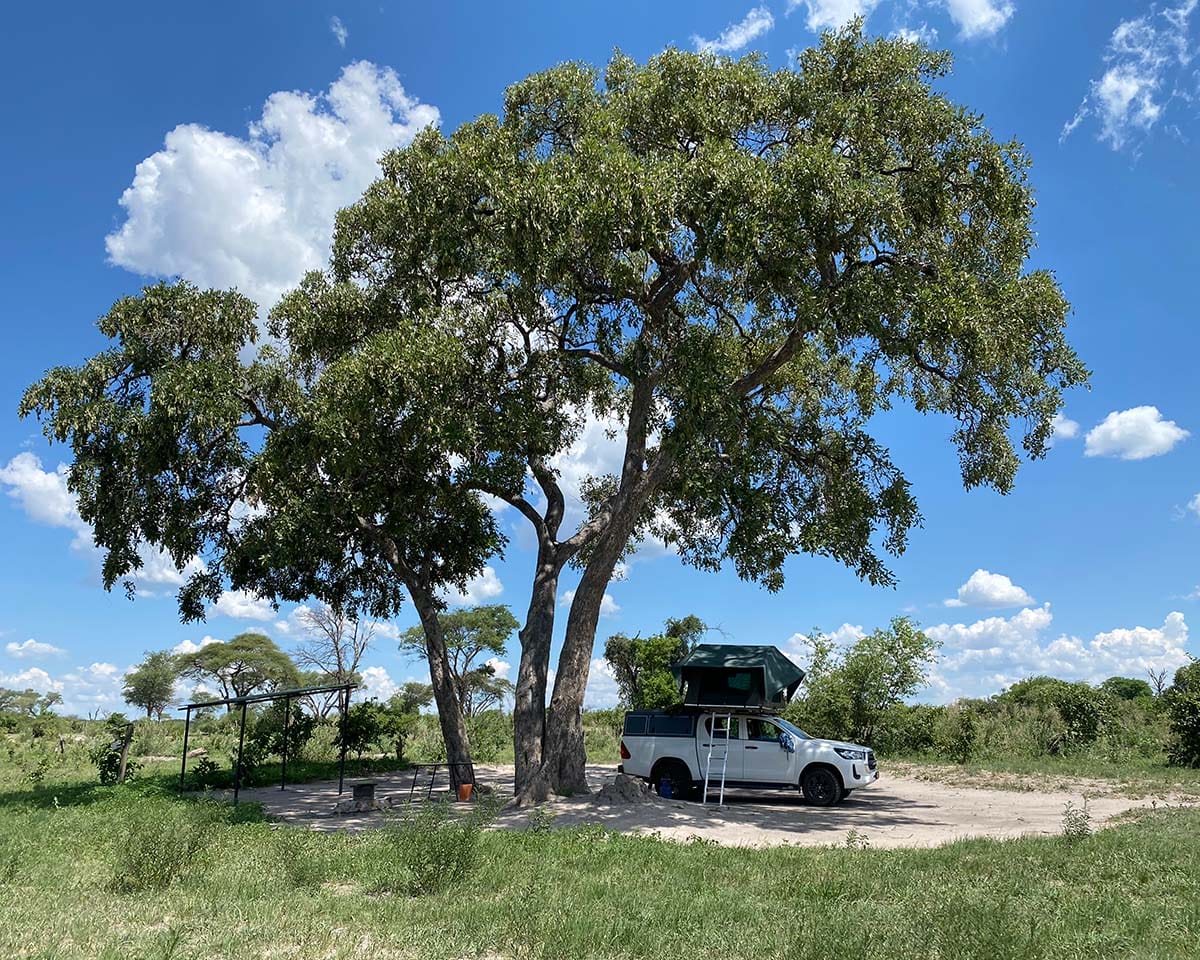
or call us
+267 7752 8837
Whatsapp vocal, monday to friday, from 9h to 17h
WHY CHOOSE THIS SELF-DRIVE SAFARI IN BOTSWANA?
A true adventure in the bush to be enjoyed solo, with family or friends
A self-drive safari covering the most beautiful reserves in northern Botswana, renowned for their excellent wildlife viewing.
2 extensions to Victoria Falls or the Okavango Delta can complete this journey through the natural wonders of the region.
LIVE UNFORGETTABLE EXPERIENCES
In Botswana, leading your own safaris through the game reserves is already a full-time activity. To vary the pleasures and put the steering wheel down from time to time, take advantage of some of the guided activities available along the way.
Exploring new horizons
CHOBE • KHWAI • MOREMI • MAKGADIKGADI & NXAI • VICTORIA FALLS • OKAVANGO DELTA
CHOBE • KANVOGO-ZAMBEZI • PANHANDLE • KALAHARI • NXAI-MAKGADIKGADI
CHOBE • KHWAI • MOREMI • MAKGADIKGADI & NXAI • VICTORIA FALLS • OKAVANGO DELTA
CHOBE • KANVOGO-ZAMBEZI • PANHANDLE • KALAHARI • NXAI-MAKGADIKGADI


